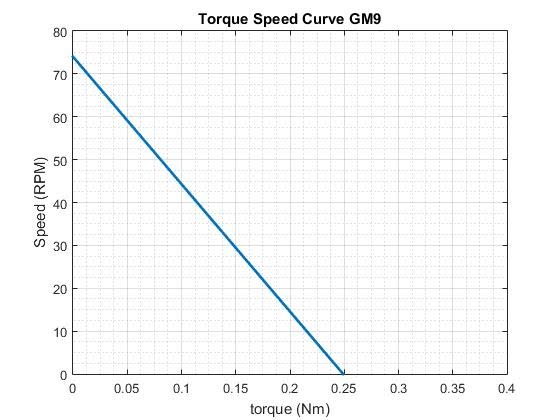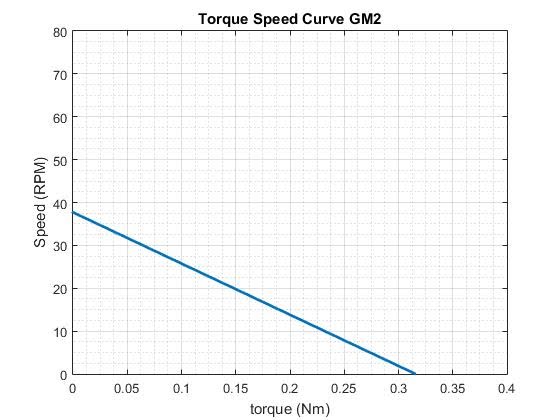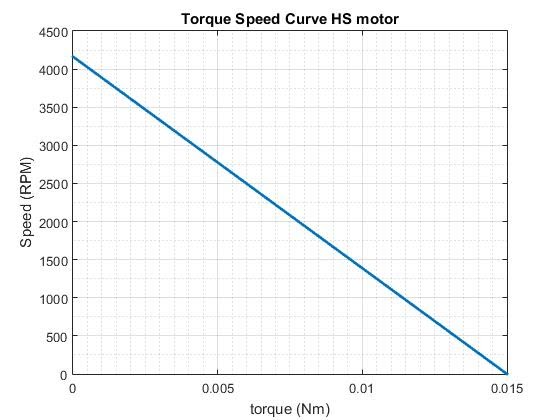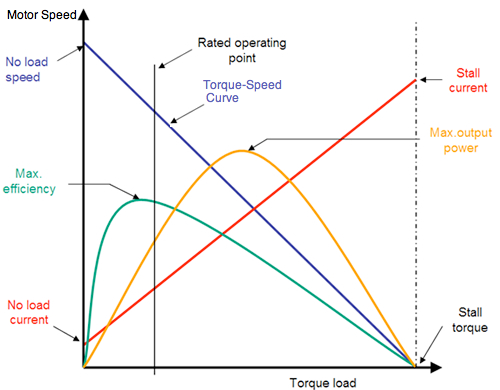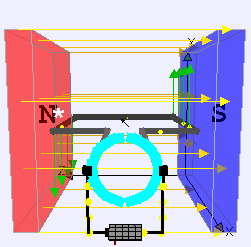Motors in In MAE3 Kit

GM9: Stall Torque: .25Nm
No Load Speed: 74RPM 
GM2: Stall Torque: .33Nm
No Load Speed: 37.5RPM

HS motor (non-geared): Stall Torque: .015Nm
No Load Speed: 4300RPM
Click below to view Animation of how DC Motors work:
Useful Definitions: - No Load Speed: Speed of a motor (ω [rad/s]) with no load applied. This can also be described as the maximum speed of the motor.
- Stall Torque: The amount of torque (τ [Nm]) needed to fully stop the rotation of the motor.
- Power Output: The power output of a motor can be calculated as τ*ω = P [Nm*rad/s = Nm/s = J/s = W].
- Maximum Power Output: The power output of a DC motor is parabolically shaped and it's maximum
is at half of the no load speed (which is also at half of the stall
torque). The max power output is given by Pmax =
½ *(τstall)*½ (ωno load).
- Current Draw: As the motor rotates, it creates a back emf voltage that reduces the amount of current flowing through the motor coils. However, when the motor is stationary there is no back emf voltage and a large amount of current could flow through the motor. A designer needs to be aware that operating a motor during startup and during stall will attempt to draw a large amount of current from the power supply. If the current demands are too high, the motor could overheat or the power supply could provide less voltage than it is designed for. It is a good practice to measure the voltage across the motor leads if high current demands are a concern.
- Efficiency. The green efficiency curve shows in the plot above describes the efficiency of converting electrical power into mechanical power. For battery operated devices this efficiency can be important.
Measuring Motor Performance
|

|

|
|
Stall Torque Measurement
|
No Load Speed
|
For more information, please see the following MAE Webpage:
|
|

